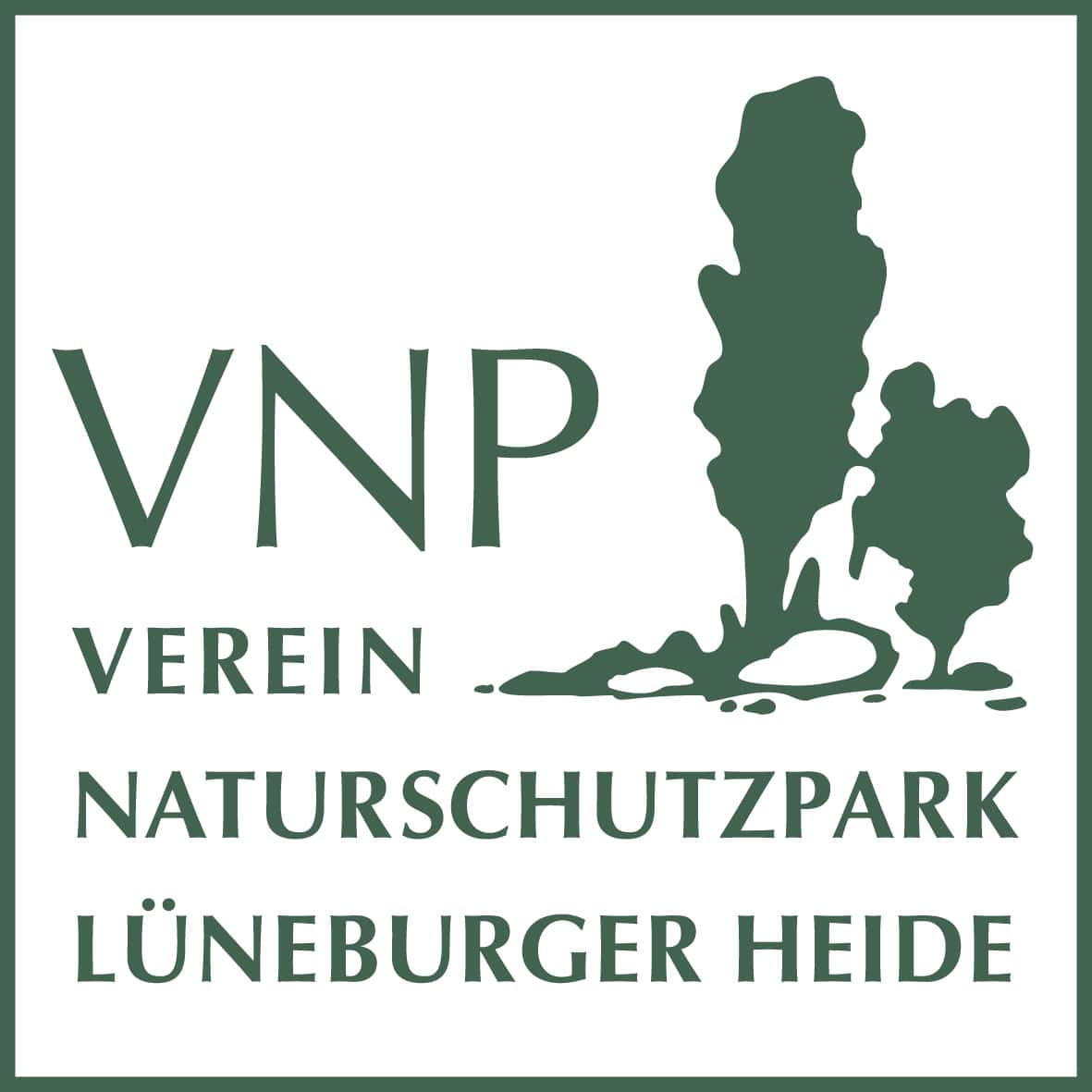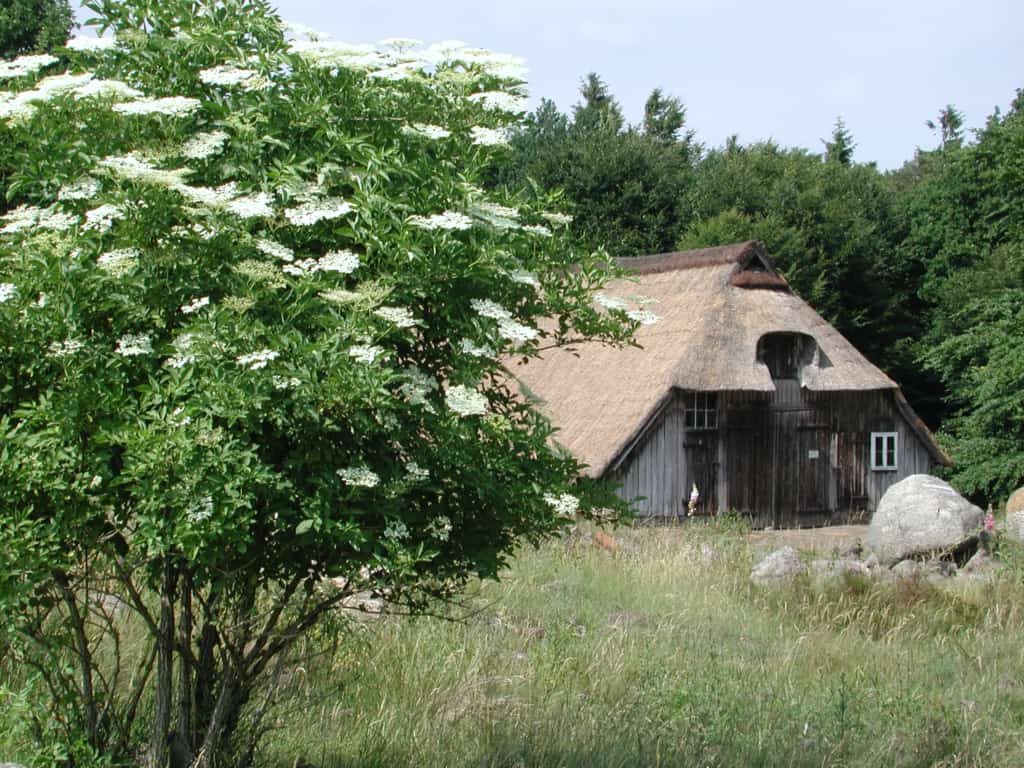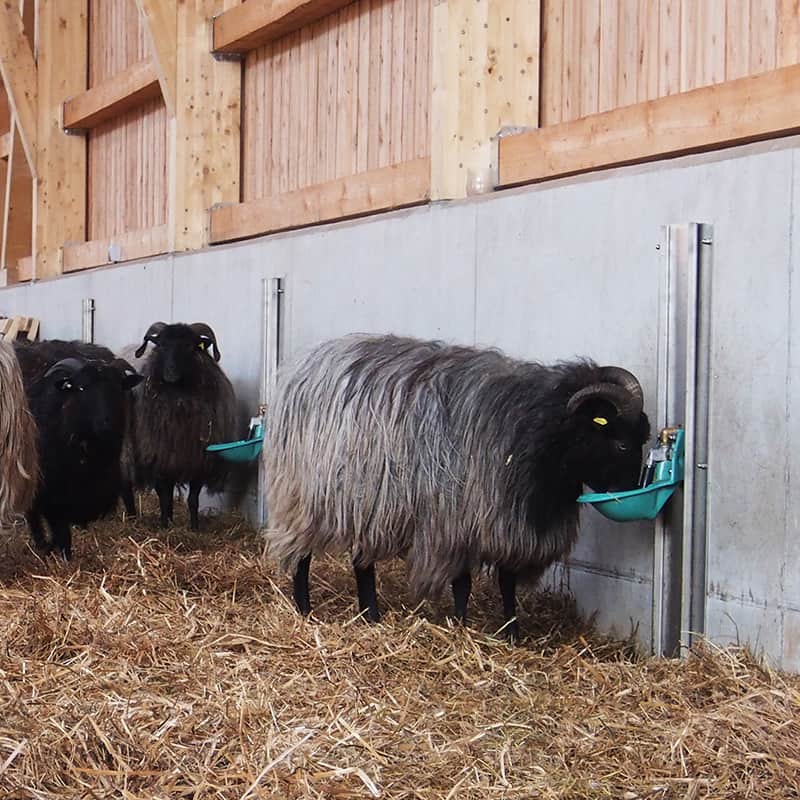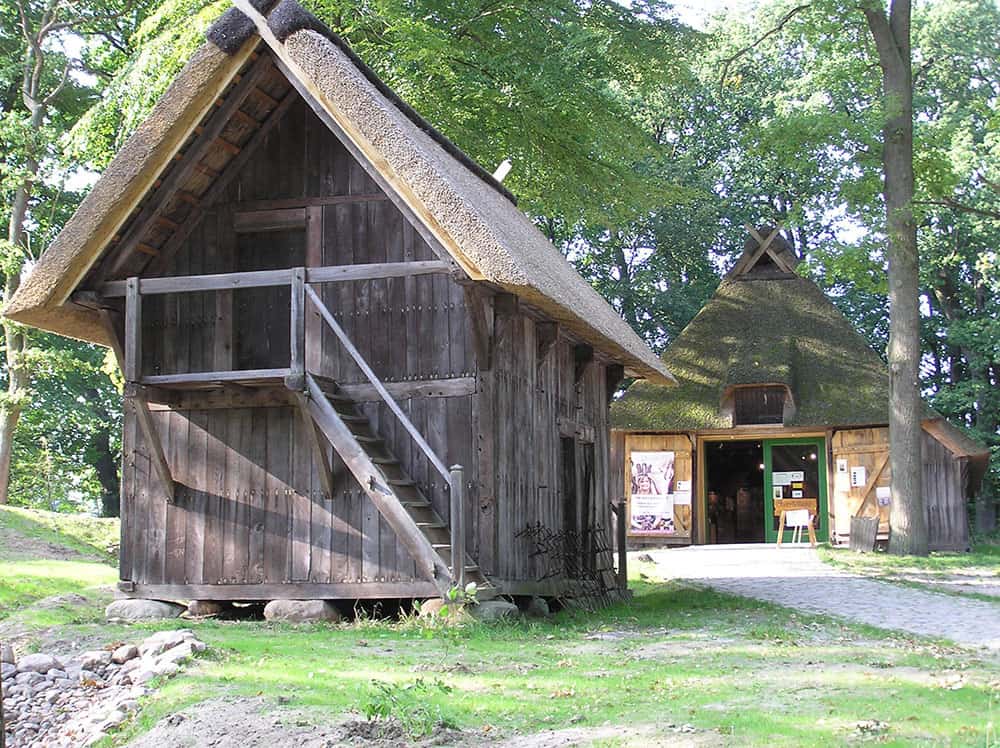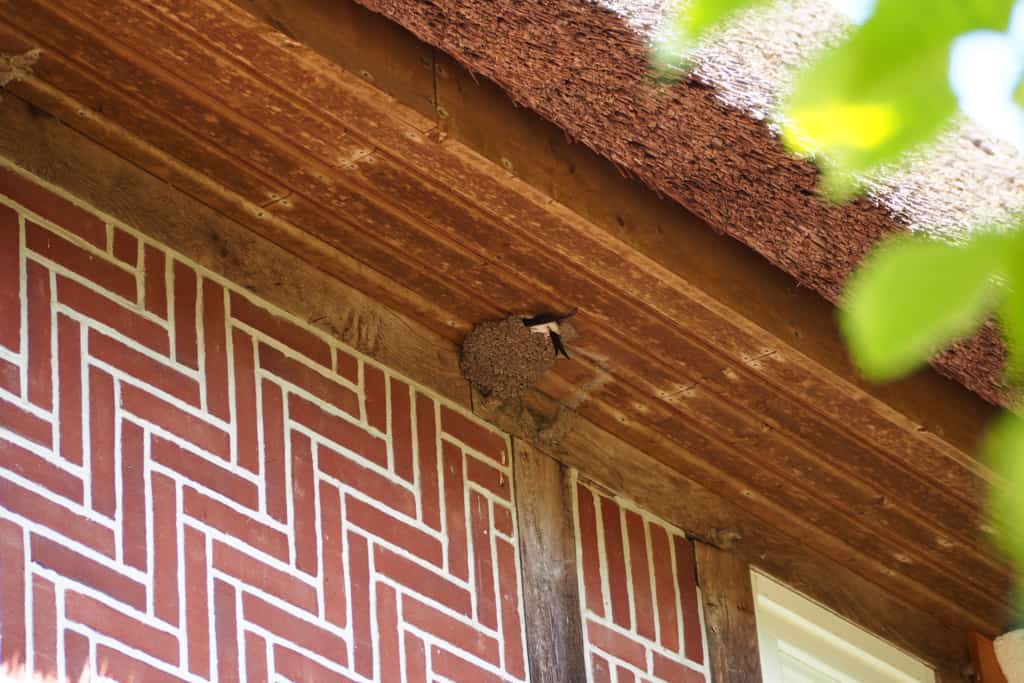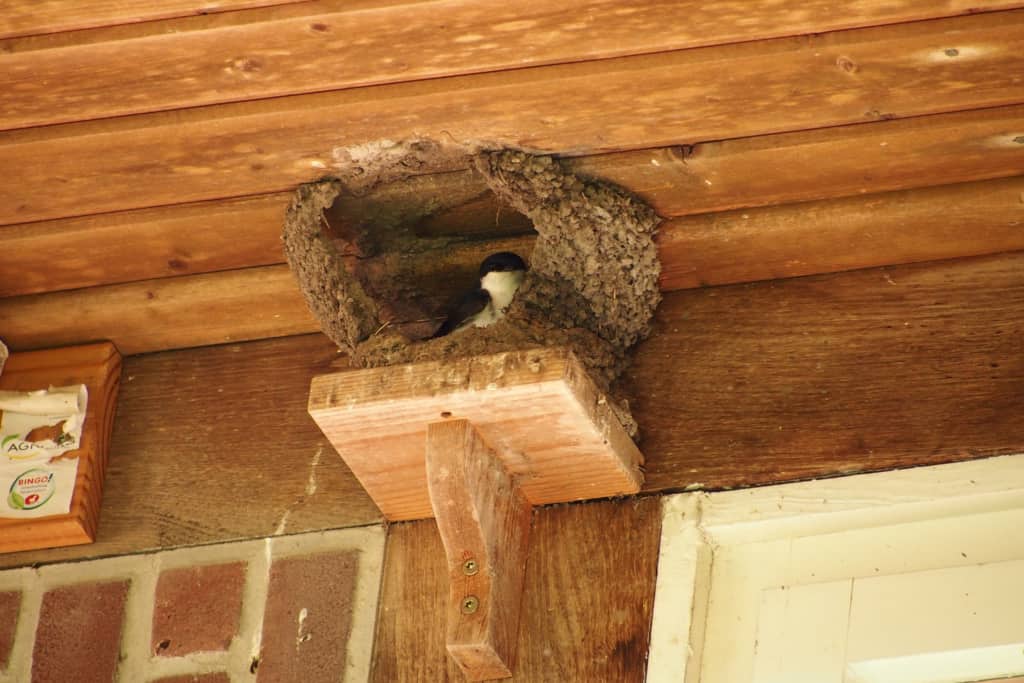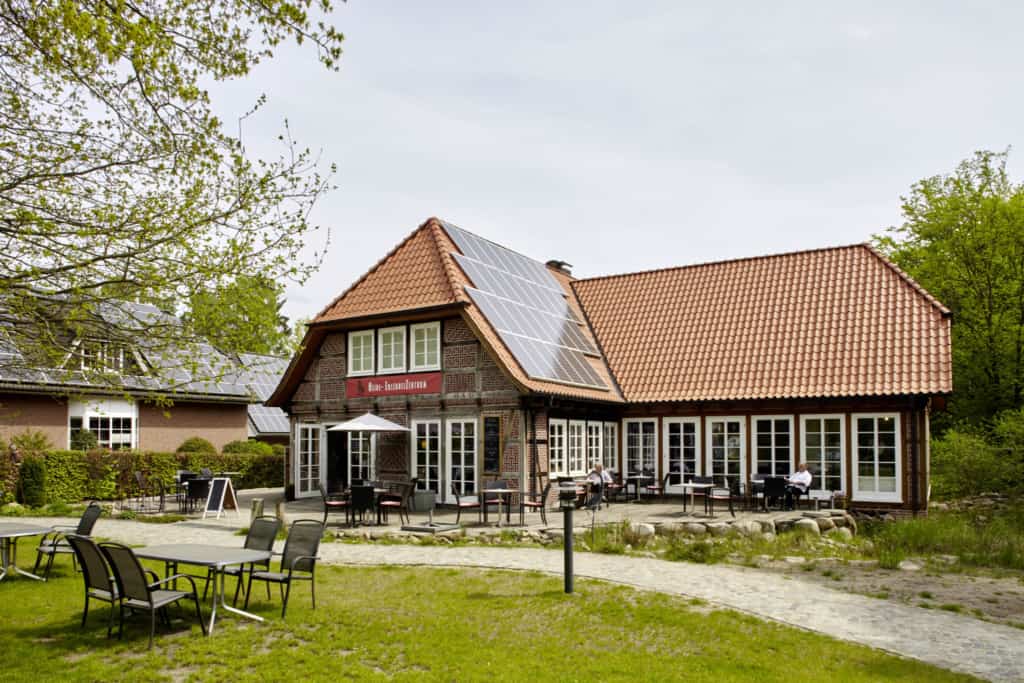Sheep sheds and shepherd’s houses
Most of the 32 sheep sheds of the VNP were built between 1956 and 1974. The stables were needed for the growing number of the association’s own Heidschnucken flocks. At its peak, 14 Schnucken flocks grazed on the VNP’s land in the Lüneburger Heide nature reserve.
In 2003, a modern Heidschnucken shed was erected on the Tütsberg which was designed from a labour-economy point of view. At the end of 2004, another modern Heidschnucken shed was built in Grasengrund near Deimern. The third is the new Schneverdingen sheep shed, which was officially inaugurated on 16th February 2017.

Where there are Heidschnucken, the shepherds cannot be far away: today, they usually live in “their” shepherds’ houses and flats closed to “their” Schnucken.
“Treppenspeicher” granaries
Eleven “Treppenspeicher” granaries are part of the VNP’s buildings. All the storage buildings are listed buildings. The storage buildings that can be seen today were all dismantled elsewhere and rebuilt in Wilsede, on the Tütsberg, on the Wulfsberg and in Wehlen.
They replaced storage buildings originally located on the farms, which had gradually fallen into disrepair over the centuries. Where exactly the storage buildings of the VNP used to be located can no longer be reconstructed due to a lack of documentation, with one exception.
In the days of the heath farmers, storage buildings were used for a wide variety of purposes. There were grain and buckwheat storage buildings, flax or linen storage buildings, honey storage buildings, meat and bacon storage buildings, and storage buildings for clothing. A single granary building may well have served several purposes at the same time, as it contains at least two separate rooms.
Bee enclosures
They are among the smallest buildings in the VNP – and are part of the scenery of the cultural landscape of the Lüneburg Heath: The so-called bee enclosures, where beekeepers place their colonies in baskets or boxes.
Almost 80 of these (bee enclosure) apiaries are part of the VNP’s buildings – a large part of them covered with thatch. Other bee enclosures are covered with roof tiles, wooden shingles or wooden cover boarding. In the time of the heath farmers, the beehives were mostly placed in simple, small shelters, which were covered with heath flags as roofing.
Species protection on buildings
It is no longer a secret that nature conservation and human architecture are not mutually exclusive. On the contrary, many species of animals have adapted to human architecture as cultural successors and have their main distribution centre and habitat here.
The VNP has long been aware of its responsibility to protect bats, barn owls, barn swallows and house martins as well as many other endangered species in our region. The high number of buildings owned by the association offers the possibility to contribute a lot to the protection of threatened species.
Barn swallows and house martins
The easiest way to distinguish between these two species of swallows is their nest construction.
House martins like to build their nests on vertical walls under natural or artificial overhangs. They also like to build their nests under roof edges or gateways. They “wall up” their closed, hemispherical nests with moist lumps of clay or earth.
Barn swallows, on the other hand, build open, shell-shaped nests of clay lumps, dung and straw. They also like to nest in buildings such as stables or barns.
So you can easily help swallows by keeping clay patches and puddles moist for the birds near potential nesting sites.
Swallows and martins are with us between April and early October and spend the winter in areas south of the Sahara to South Africa.
Energy
The VNP operates two woodchip heating plants in Wilsede and on the Tütsberg.
Photovoltaic systems have been installed on the roofs of the Grasengrund sheep barn, the Heide-ErlebnisZentrum and the barn at Hof Tütsberg.
District heating network in Wilsede
The existing district heating network in Wilsede was extended by 598 m in 2014. The Hillmershof, the Franz House, the Sass House and the Old School were connected to the woodchip heating system. All Wilsede buildings of the VNP Stiftung are now heated by 100 % renewable energy.
Photovoltaic system on the Tütsberg machinery hall
Due to the almost perfect north-south orientation of the machine hall and a roof pitch of 30°, the southern roof surface could easily be equipped with photovoltaic modules. The installed module output of the system is 81 KWp. Due to reconfiguration work in the electrical distribution, self-consumption is possible within the entire Tütsberg. The system was installed in 2014.
Would you like to know more?
Our head of department „Buildings and Nature Conservation“ Heiko Becker will be happy to answer your questions:
Phone: 05198 98243-31
Email:
The other contact person is Frank Sabellek, an employee in the building maintenance department:
Phone: 05198 98243-31
E-Mail:
